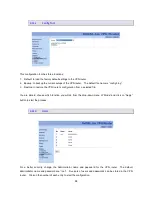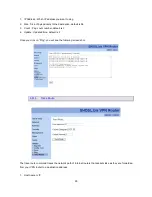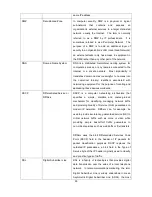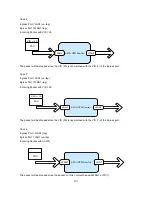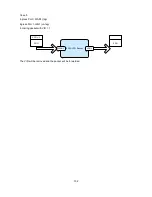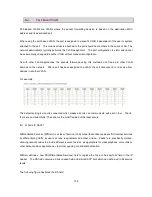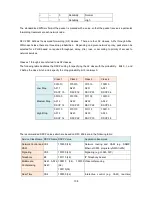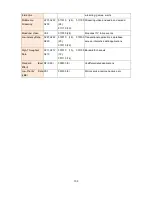
98
UDP
User Datagram Protocol
UDP (User Datagram Protocol) offers only a minimal
transport service (non-guaranteed datagram delivery)
and gives applications direct access to the datagram
service of the IP layer. UDP is used by applications that
do not require the level of service of TCP or that wish to
use communications services (e.g., multicast or
broadcast delivery) not available from TCP.
UPnP
Universal Plug and Play
Universal Plug and Play (UPnP) is a set of networking
protocols for primarily residential networks without
expert administrators that permits networked devices,
such as personal computers, printers, Internet
gateways, Wi-Fi access points, mobile device, to
seamlessly discover each other’s presence on the
network and establish functional network services for
data sharing, communications, and entertainment.
VBR-nrt
Variable Bit Rate
non-real-time
VBR-nrt is intended for non-real-time applications, such
as FTP, e-mail and browsing.
VBR-rt
Variable Bit Rate real-time VBR-rt is intended for real-time applications, such as
compressed voice over IP and video conferencing that
require tightly constrained delays and delay variation.
VBR-rt is characterized by a peak cell rate (PCR),
sustained cell rate (SCR), and maximum burst rate
(MBR).
VCI
Virtual Channel Identifier
for set up ATM Permanent Virtual Channels(PVC).
VID
Virtual LAN ID
VID (VLAN ID) is the identification of the VLAN, which
is basically used by the standard 802.1Q. It has 12 bits
and allow the identification of 4096 (212) VLANs. Of the
4096 possible VIDs, a VID of 0 is used to identify
priority frames and value 4095 (FFF) is reserved, so
the maximum possible VLAN configurations are 4,094.
The VPN Router initially default configures one VLAN,
VID=1.
VLAN
Virtual LAN
A VLAN is a group of hosts with a common set of
requirements that communicate as if they were
attached to the same broadcast domain, regardless of
their physical location. A VLAN has the same attributes
as a physical LAN, but it allows for end stations to be
grouped together even if they are not located on the
same network switch. Network reconfiguration can be





